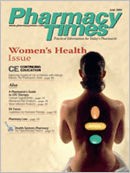"Classy" Drug Interactions
Drug interactions often are purportedto occur across all members of adrug class. Drug classes are often basedon the drug's primary pharmacologicactivity. For example, all thiazidediuretics, macrolide antibiotics, nonsteroidalanti-inflammatory drugs(NSAIDs), and tricyclic antidepressantshave been considered by some to havesimilar interaction potential within theclass. This method of assigning druginteractions was adopted some yearsago when the mechanisms responsiblefor most interactions were unknownand the number of drugs in a class wasoften limited to 2 or 3 agents. Becausedata were not available for all membersof a class of drugs, the conservativeapproach was to assume that all membersof the class would interact in asimilar manner.
With increased knowledge aboutthe mechanisms involved in druginteractions, the idea that all membersof a similar pharmacologic class willinteract in the same manner hasbecome passé. Yet, one can still findexamples of drugs listed as interactingbased only on their membership in acertain class.
It is important to remember thatdrug interactions are divided into 2fundamental types, based on themechanism of the interaction, pharmacokineticinteractions, and pharmacodynamicinteractions. Groupingpharmacokinetic drug interactions bypharmacologic class rarely results inan accurate classification. For example,all macrolide antibiotics often arelisted as inhibitors of CYP3A4. Yet, thisis only true for erythromycin, clarithromycin,and troleandomycin, notfor azithromycin. Similarly, listing allof the 3-hydroxy-3-methylglutarylcoenzyme A reductase inhibitors, orstatins, as interacting with CYP3A4inhibitors is incorrect, but still occurs.The selective serotonin reuptakeinhibitors represent another largegroup of pharmacologically relateddrugs that frequently are considered todemonstrate equivalent potential interactionsdespite much evidence to thecontrary.
Some pharmacodynamic interactionsdo indeed affect all members of aclass. Hyperkalemia due to coadministrationof angiotensin-converting enzymeinhibitors and potassium-sparingdiuretics may occur with the combinationof any member of either drugclass. Interactions due to simple additivepharmacodynamic effects, as mayoccur when 2 drugs with sedative orhypotensive effects are coadministered,serve as another example inwhich classification based on thedrug's pharmacologic class often accuratelypredicts potential pharmacodynamicinteractions. Of course, mostpractitioners do not need to bereminded that such pharmacodynamicinteractions may occur. Furthermore,the selection of drugs with similarpharmacologic effects is the basis forthe selection of most drugs used incombination.
Often small differences in the pharmacologyof drugs in a class create subgroupsof interacting and noninteractingagents. Examples of drug classeswith subsets of drugs that have a differentinteraction potential from theother members of the class include cardio-selectivebeta-blockers, calciumchannel blockers that slow cardiacconduction or inhibit CYP3A4, andcyclooxygenase-2 NSAIDs.
The problems of incorrect assignmentof potential interactions basedon drug class include the listing ofinteractions that are unlikely to occur.These false-positive interaction listingsare quite common in most computerizeddatabases and cause users tobecome desensitized to potential interactionsthat offer real risk to thepatient. Interaction alerts based onfalse-positive reports may lead to inappropriatechanges in drug therapy orpatient monitoring. Class groupingalso may eliminate consideration of auseful alternative drug for one of thepair of truly interacting drugs.
Knowledge of noninteracting drugswith similar pharmacology is the key toselecting alternative drugs to substitutefor one drug of an interacting pair. Forexample, the substitution of pravastatin,fluvastatin, or rosuvastatin for lovastatinor simvastatin in a patient prescribedketoconazole would prevent possibleexcess accumulation of the statin.Alternatively, an antifungal agent withoutCYP3A4 inhibition (eg, terbinafine)could be considered for patients takinglovastatin or simvastatin. The selectionof a noninteracting drug with similarefficacy is often the best approach tomanaging a potential drug interaction.
Until drug interaction listings arepurged of inappropriate interactionpairs based only on the drug's pharmacologicclass, pharmacists must rely onalternative sources to evaluate potentialinteractions. When a true interactionis identified, the pharmacistshould try to identify an alternativedrug for either the object or the precipitantdrug. If it is necessary to contactthe prescriber regarding a potentialinteraction, offering several noninteractingalternative drugs with similartherapeutic efficacy will assist the prescriberin selecting an appropriatemanagement strategy.
Drs. Horn and Hansten are both professorsof pharmacy at the University of WashingtonSchool of Pharmacy. For an electronic versionof this article, including references ifany, visit www.hanstenandhorn.com.

